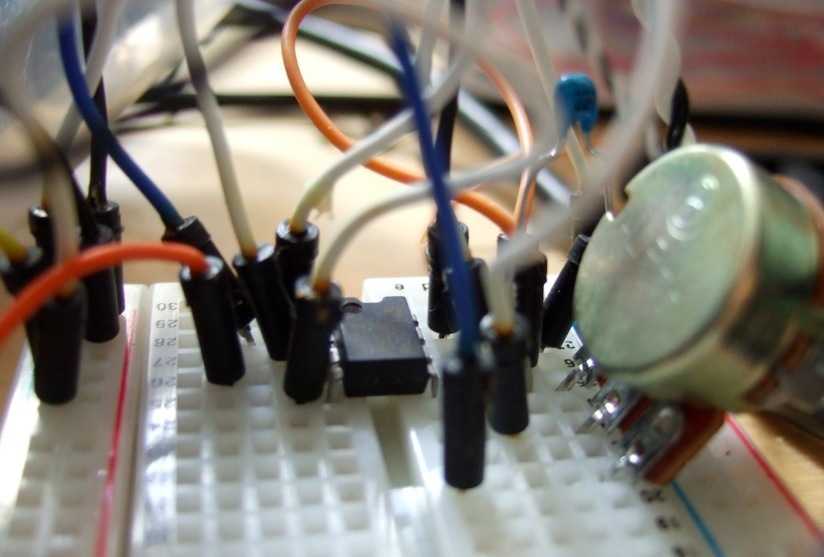Really simple portamento/slide circuit
 I’ve wanted to include a simple slide in my silly CSQ-100-style sequencer, and I’ve just got this circuit from a post at electro-music working, using a (probably not ideal) LM358 as a buffer running off a single +12v supply, and using a 1M pot rather than the 100k.
I’ve wanted to include a simple slide in my silly CSQ-100-style sequencer, and I’ve just got this circuit from a post at electro-music working, using a (probably not ideal) LM358 as a buffer running off a single +12v supply, and using a 1M pot rather than the 100k.

Here’s how it sounds on an MS20, with varying amounts of drunken slide.
The 1M pot is too big, I need to change the range to about 200k or so. From what I’ve read, I’d be better off with a log pot but I’ve only got linear ones to hand. I’m thinking I’ll switch the slide in and out of the circuit from the sequencer using a 4066 switch, that’s the next step.
Update: Here’s the MS20 being triggered by the sequencer, using a 4066 to bring the slide capacitor into circuit on 5v triggers from the sequencer, so the portamento only happens on certain notes. Initially I was trying to power the 4066 off +12v and switch it from +5v – If I’d have read the datasheet I would have realised it needs Vdd to switch, duh. Got there in the end.

9 comments